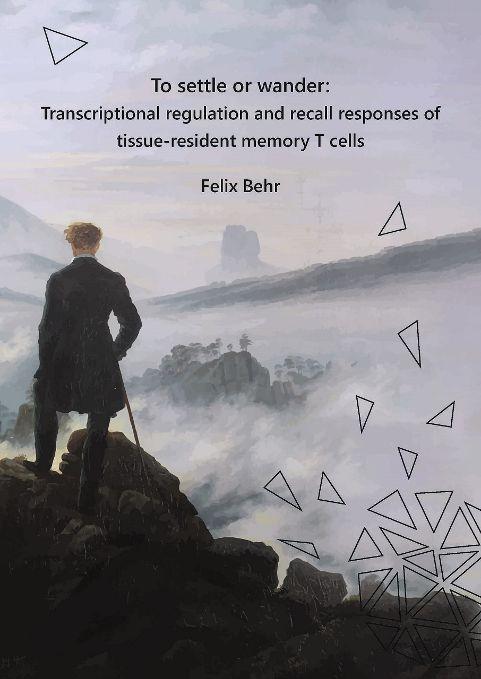Thesis Felix Behr
On 9 October 2020 (14.00 hrs) Felix Behr defended his PhD thesis 'To settle or wander: Transcriptional regulation and recall responses of tissue-resident memory T cells' at the University of Amsterdam
He was awarded his PhD cum laude.
Promotor: Prof RAW van Lier MD PhD
Co-promotor: K van Gisbergen PhD
Venue: Aula, University of Amsterdam, and online.
Summary
Tissue-resident memory CD8+ T (TRM) cells localize to barrier tissues, where they mediate efficient local protection against reinvading pathogens. TRM cells are thus crucial for tissue immunity, but many aspects of TRM cell biology, including the transcription factors regulating TRM development and their fate following reinfection, have remained incompletely understood. In this thesis, we have studied the transcriptional program governing tissue residency and the secondary responses of TRM cells. Our research highlights the transcription factors Hobit and Blimp-1 as central drivers of TRM formation through the suppression of tissue-egress pathways. Hobit is expressed by TRM cells throughout tissues and identifies early commitment to the TRM lineage. Hobit and Blimp-1 further contribute to TRM cell identity by controlling the maintenance of cytotoxic effector functions. In contrast, the transcription factor Eomes regulates TRM cell differentiation by restricting the formation of TRM precursors and favoring TCM development. Following reinfection, pathogen-specific TRM cells contribute substantially to local and systemic CD8+ T cell responses, and give rise to a functionally distinct subset of secondary circulating memory CD8+ T cells. However, following inflammation in the absence of antigen, the maintenance of non-specific TRM populations is regulated by local tissue damage. Circulating memory CD8+ T cells only minimally contribute to secondary effector and memory responses at mucosal sites after reinfection. Taken together, our findings provide important insights into the mechanisms controlling the formation, maintenance, and secondary responses of TRM cells, which may be exploited to harness the superior protective capacity of TRM cells for future therapeutic approaches.
Chapters
Chapter 1
General Introduction
Chapter 2
Hobit and Blimp1 instruct a universal transcriptional program of tissue-residency in lymphocytes Abstract
Chapter 3
Blimp-1 rather than Ho bit drives the formation of tissueresident memory CD8+ T cells in the lungs Abstract
Chapter 4
Blimp-1 induces and Hobit maintains the cytotoxic mediator granzyme B in CD8 T cells Abstract
Chapter 5
Eomes regulates early establishment of the Hobit+ TRM lineage
Chapter 6
Hobit identifies tissue-resident memory CD4+ T cell development after viral and bacterial infection
Chapter 7
Trm maintenance is regulated by tissue damage via P2RX7 Abstract
Chapter 8
Tissue-resident memory CD8+ T cells shape local and systemic secondary T cell responses Abstract
Chapter 9
Limited contribution of circulating memory CD8+ T cells to resident memory at mucosal sites after reinfection
Chapter 10
General Discussion
Download
Download PhD thesis (university repository)
